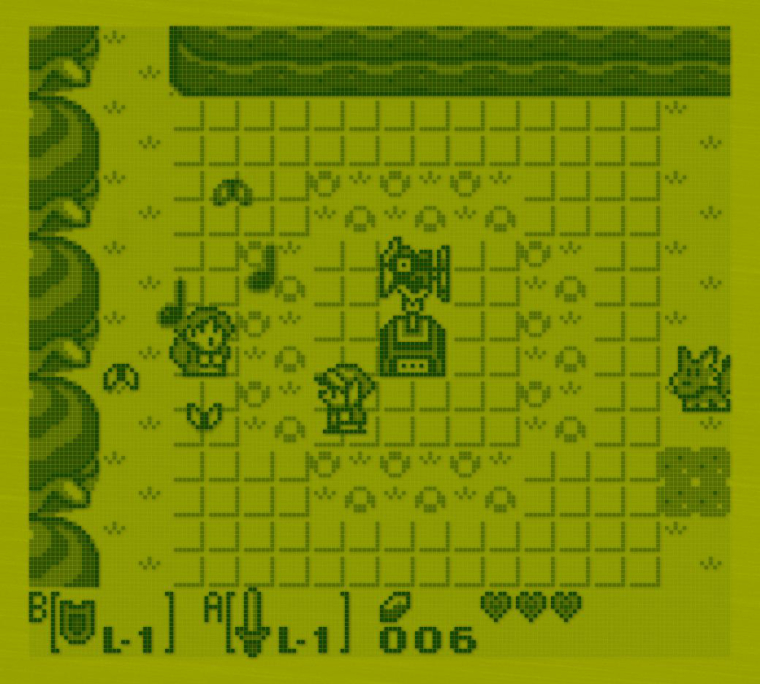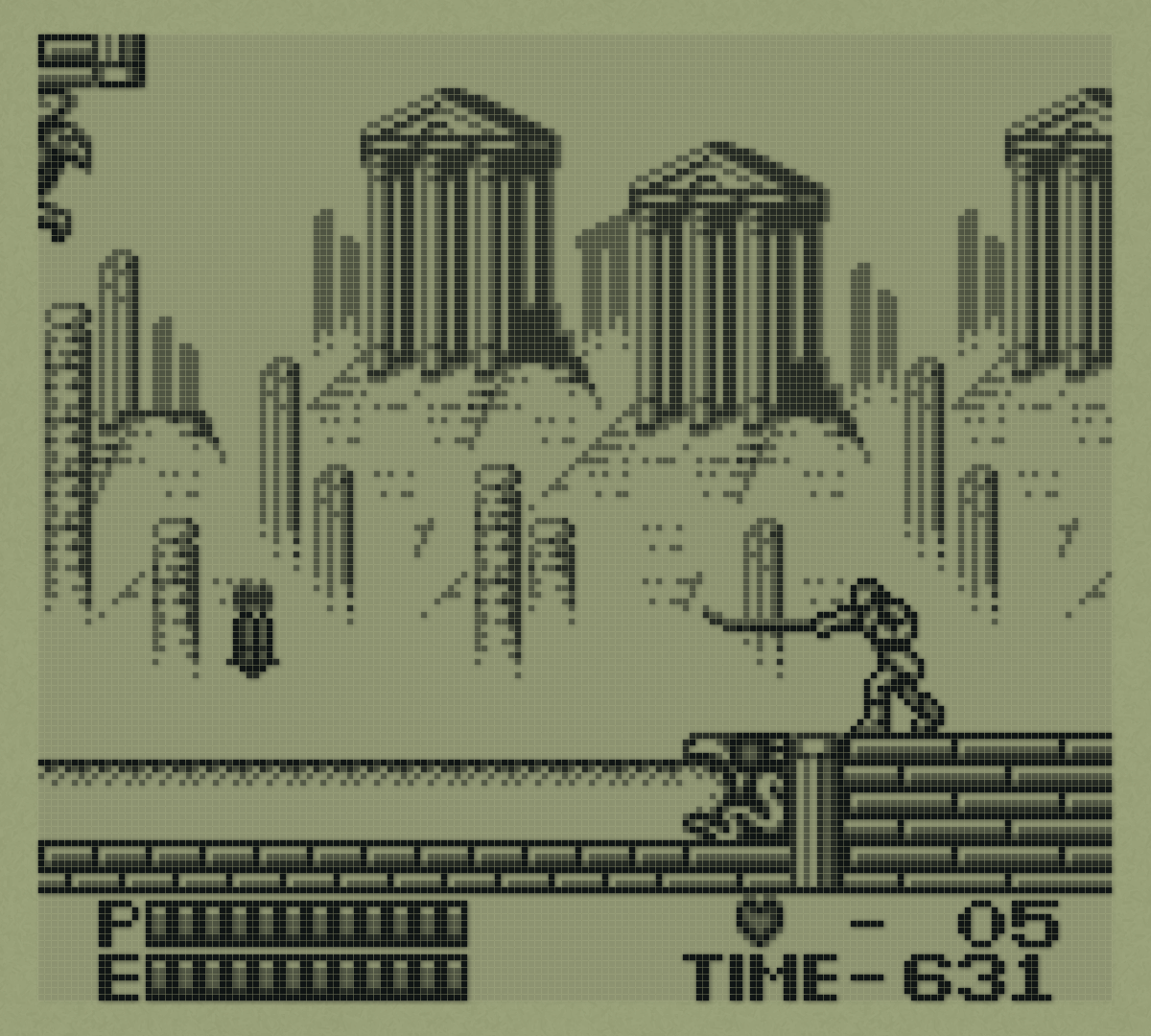-
Ever wanted an RSS feed of all your favorite gaming news sites? Go check out our new Gaming Headlines feed! Read more about it here.
-
We have made minor adjustments to how the search bar works on ResetEra. You can read about the changes here.
How do you like to display your retro pixel art games: filtered or unfiltered?
- Thread starter ScOULaris
- Start date
You are using an out of date browser. It may not display this or other websites correctly.
You should upgrade or use an alternative browser.
You should upgrade or use an alternative browser.
Nice thread. I prefer scanline filters.
Subbing to this thread for when I get a proper retro setup going.
Subbing to this thread for when I get a proper retro setup going.
Love me some scanlines, but a good scanline filter is hard to find. Straight pixels look great too tho, so that's usually what I roll with.
well my option wasn't in the poll...
Generally I play unfiltered except I use a color adjustment that ramps the gamma the same way CRTs do. This produces the same colors from CRTs while simultaneously giving me clear sharp pixels. Here is an example:
Mega Man X3, no color filter:

Mega Man X3, with color filter:

Without the color adjustment the image is always too bright and this corrects it pretty well.
Generally I play unfiltered except I use a color adjustment that ramps the gamma the same way CRTs do. This produces the same colors from CRTs while simultaneously giving me clear sharp pixels. Here is an example:
Mega Man X3, no color filter:

Mega Man X3, with color filter:

Without the color adjustment the image is always too bright and this corrects it pretty well.
Raw pixels is terrible if the game is pre-16 bits. The tiles of games like Zelda 2 will destroy your eyes if you don't put a filter on them, Jesus.
I usually use scanlines, or a CRT filter if available. A lot depends on the display, though. Scanlines can look very ugly on some displays, and they darken the image quite a bit.
16-bit pixel art and later I can play raw, but I still prefer scanlines.
I usually use scanlines, or a CRT filter if available. A lot depends on the display, though. Scanlines can look very ugly on some displays, and they darken the image quite a bit.
16-bit pixel art and later I can play raw, but I still prefer scanlines.
Agree. Most of the scanline filters look like shit IMO. Sometimes it makes the game look better but I find that a rare occasion. This is for modern retro games. I play my oldschool console games on a CRT on their original systems.Sharp raw pixels unless there's a good filter and I may shift back and forth depending on how I feel.
I never got that filter or why anyone enjoys it.I couldn't care less if other people like filters, I just don't understand it, lol.

On the left, each pixel has been carefully placed to convey visual information. On the right, microwaved crayons.
This is really interesting. I've never seen this filter before, but it reminds me of the simple interpolation option that a lot of older emulators used to use before GPU-driven bilinear filtering became the standard. I like it a lot.You should pretty much never be using unfiltered pixels.
Unfiltered pixels mean that you are either displaying the game in the wrong aspect ratio - likely with black borders instead of filling the height of the screen, or there will be pixel crawl/flickering artifacts when anything moves across the screen.
At the very minimum, you should be using something like the Pixelate shader.
This shader retains virtually all of the sharpness of unfiltered pixels, but prevents flickering artifacts caused by non-integer scaling - whether that is to fill the height of the display, or to correct the aspect ratio.
Here's an example of Castlevania: Symphony of the Night, scaled to 1080p.
Unfiltered pixels - displays in the wrong aspect ratio, and the image does not fill the display:

Bilinear filtering - displays in the correct aspect ratio and fills the display, but the image is significantly blurred:
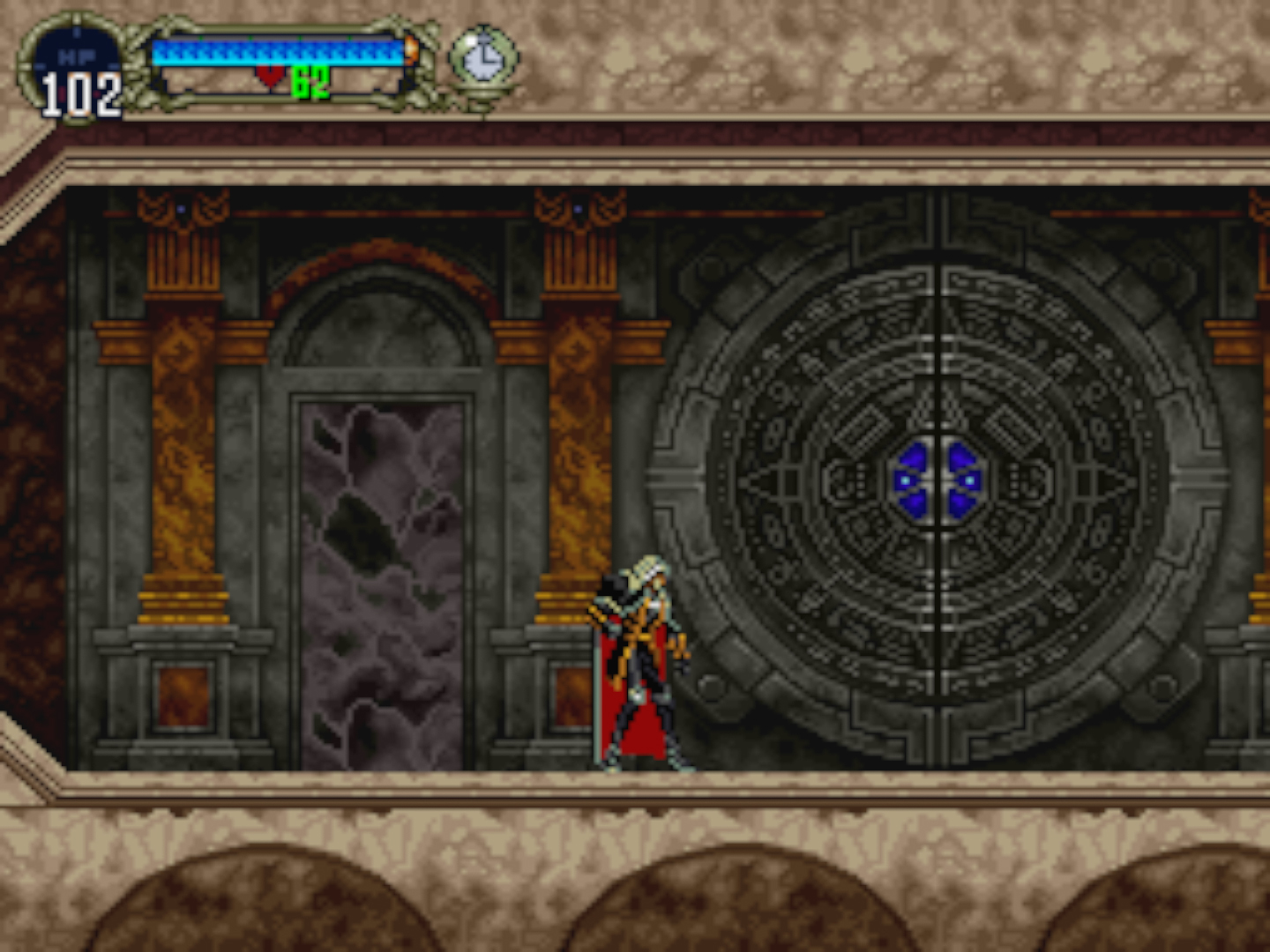
Note: this is bilinear filtering in linear light rather than gamma light, as most filters will use. Bilinear filtering in gamma light will dull the picture (look at the health counter).
Pixelate shader - displays in the correct aspect ratio and fills the display with minimal blurring:
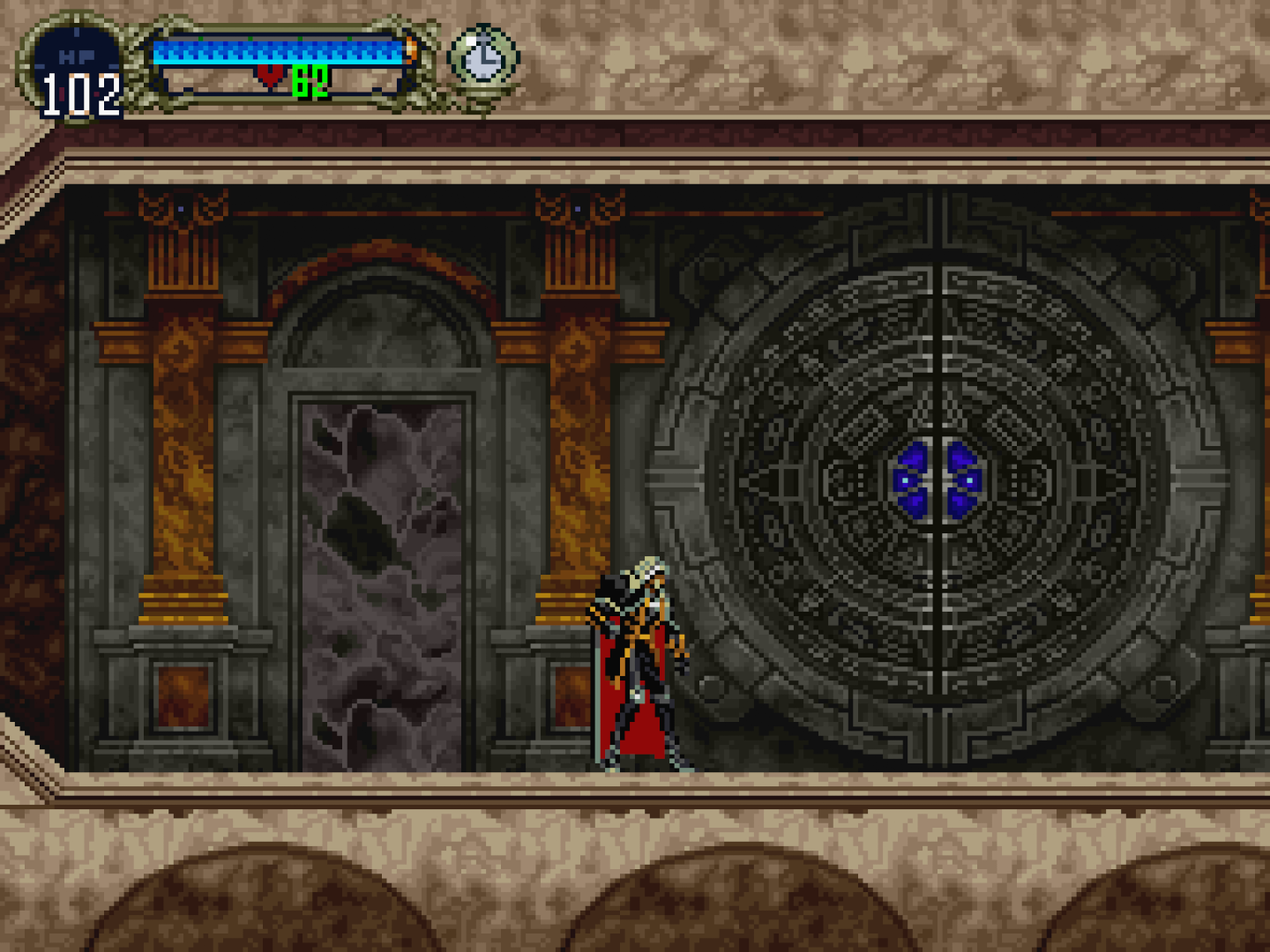
If you zoom in close on this image, you can see that the blurring is generally constrained to a single pixel width around every pixel, and at typical TV/monitor distances it should not be noticeable.
My preference is for a good CRT shader - though not one which adds distortion. I have a tweaked CRT Royale preset that I like.
One thing that is very important to note about scanlines or CRT filters however, is that any filter which brightens the picture is not displaying color accurately.
If you have a really basic scanline filter, one which just draws solid black lines every other line, it is supposed to make the image dimmer.
Half the screen is now black, therefore the brightness should have dropped by about 50%.
Scanline filters which try to brighten up the image are distorting it by lowering the gamma or doing something even worse. You end up with ugly and washed-out colors.
What you need to do with a scanline filter like that is to double the brightness of your display. If your backlight was at 5, raise it to 10 (assuming the control is linear).
This way you restore the brightness/vibrance that was lost by adding the scanlines without affecting the color reproduction.
Even with the most basic scanlines, doing this can start to make the picture feel a lot more like a CRT which had a very high intensity light output, but only for a very short amount of time.
With better scanline implementations or CRT shaders - ones which do not do brightness compensation or can have it disabled - you probably don't need to raise the brightness quite so much, as the scanlines are likely taking up less than 50% of the screen.
As a owner of a PVM I find all "CRT filters" to be horrible and not representative of the real thing at all.
https://www.retrogameboards.com/t/s...ause-240p-is-all-the-ps-i-need-56k-warning/71
Thats not true. Retroarch has some really good CRT shaders. Look at the pictures in the thread. If it wasn't in the description you probably couldn't tell if it is a real CRT or a CRT shader.
Damn. You're running that on an OLED display? It looks perfect.I love the Retro Mode on the UltraHDMI.
It's the best replication of CRT I have seen to date.
Together with perfect OLED blacks, it looks almost like the real deal.
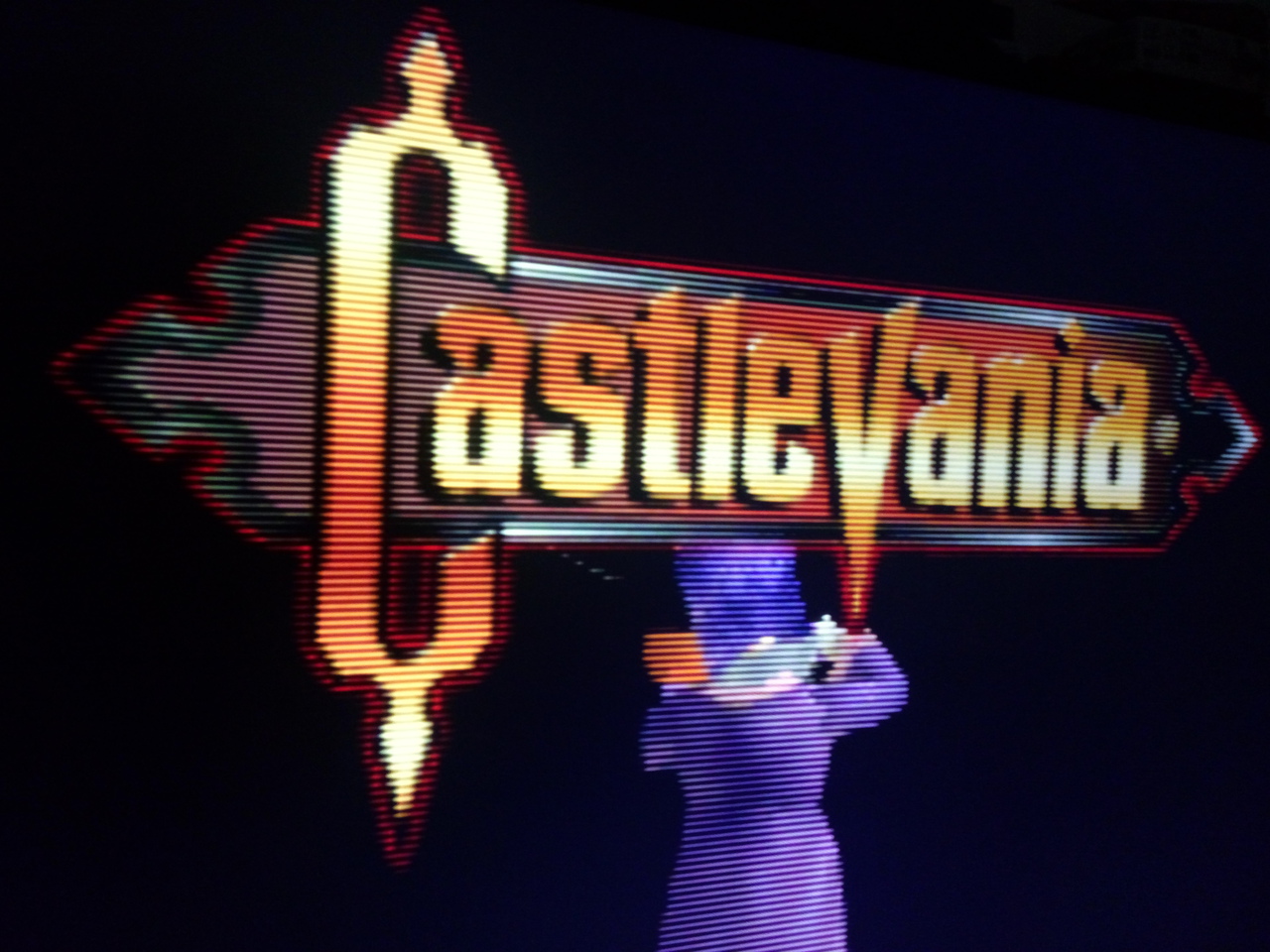
You should pretty much never be using unfiltered pixels.
Unfiltered pixels mean that you are either displaying the game in the wrong aspect ratio - likely with black borders instead of filling the height of the screen, or there will be pixel crawl/flickering artifacts when anything moves across the screen.
At the very minimum, you should be using something like the Pixelate shader.
This shader retains virtually all of the sharpness of unfiltered pixels, but prevents flickering artifacts caused by non-integer scaling - whether that is to fill the height of the display, or to correct the aspect ratio.
Here's an example of Castlevania: Symphony of the Night, scaled to 1080p.
Unfiltered pixels - displays in the wrong aspect ratio, and the image does not fill the display:

Bilinear filtering - displays in the correct aspect ratio and fills the display, but the image is significantly blurred:

Note: this is bilinear filtering in linear light rather than gamma light, as most filters will use. Bilinear filtering in gamma light will dull the picture (look at the health counter).
Pixelate shader - displays in the correct aspect ratio and fills the display with minimal blurring:

If you zoom in close on this image, you can see that the blurring is generally constrained to a single pixel width around every pixel, and at typical TV/monitor distances it should not be noticeable.
My preference is for a good CRT shader - though not one which adds distortion. I have a tweaked CRT Royale preset that I like.
One thing that is very important to note about scanlines or CRT filters however, is that any filter which brightens the picture is not displaying color accurately.
If you have a really basic scanline filter, one which just draws solid black lines every other line, it is supposed to make the image dimmer.
Half the screen is now black, therefore the brightness should have dropped by about 50%.
Scanline filters which try to brighten up the image are distorting it by lowering the gamma or doing something even worse. You end up with ugly and washed-out colors.
What you need to do with a scanline filter like that is to double the brightness of your display. If your backlight was at 5, raise it to 10 (assuming the control is linear).
This way you restore the brightness/vibrance that was lost by adding the scanlines without affecting the color reproduction.
Even with the most basic scanlines, doing this can start to make the picture feel a lot more like a CRT which had a very high intensity light output, but only for a very short amount of time.
With better scanline implementations or CRT shaders - ones which do not do brightness compensation or can have it disabled - you probably don't need to raise the brightness quite so much, as the scanlines are likely taking up less than 50% of the screen.
Good post that I fear will be lost on the unfiltered masses.
Threadmarked for better visibility.
Definitely using CRT Shaders. I play my retro games on a Sony PVM and unfiltered looks nothing like what games in the past used to look like.
I'll play usually in a line doubling mode with the OSSC on an OLED. Occasionally I'll use scanlines but I find they make the picture a bit too 'dark'.
I generally try to play my retro games on a CRT. When that's not possible, however, I like to play on a 720p native display like the Switch's screen and do pure scanlines with no other filtering.
Bilinear filtering is, under no circumstances, acceptable to me. It looks worse than composite on a standard SD CRT.
Anything that attempts to soften the image has to be *very* carefully applied.
I generally don't play retro games on my 1080p display at all. But when I do, I use the Framemeister and set it to 480p with scanlines wnd turn up the brightness, or 720p with scanlines, or 1080p without any filters enabled.
Retro commercial compilations are a different story. I evaluate those on a case by case basis but I find most of them scale rather poorly and have bad filters.
Bilinear filtering is, under no circumstances, acceptable to me. It looks worse than composite on a standard SD CRT.
Anything that attempts to soften the image has to be *very* carefully applied.
I generally don't play retro games on my 1080p display at all. But when I do, I use the Framemeister and set it to 480p with scanlines wnd turn up the brightness, or 720p with scanlines, or 1080p without any filters enabled.
Retro commercial compilations are a different story. I evaluate those on a case by case basis but I find most of them scale rather poorly and have bad filters.
I tend to agree. Damn shame when an otherwise solid retro compilation release has poor image filtering options.Retro commercial compilations are a different story. I evaluate those on a case by case basis but I find most of them scale rather poorly and have bad filters.
Interesting to know, thanks. I've recently started playing SNES games on the Analog Super NT on a 1080p set. It gives me the option of setting it at 480/720/1080p. Is 480p recommended wherever possible?I generally try to play my retro games on a CRT. When that's not possible, however, I like to play on a 720p native display like the Switch's screen and do pure scanlines with no other filtering.
Bilinear filtering is, under no circumstances, acceptable to me. It looks worse than composite on a standard SD CRT.
Anything that attempts to soften the image has to be *very* carefully applied.
I generally don't play retro games on my 1080p display at all. But when I do, I use the Framemeister and set it to 480p with scanlines wnd turn up the brightness, or 720p with scanlines, or 1080p without any filters enabled.
Retro commercial compilations are a different story. I evaluate those on a case by case basis but I find most of them scale rather poorly and have bad filters.
True.
Depends on the upscaling quality and speed on your TV. Most likely it's best to output to your TV at native res (1080p in your case) to minimize input lag add by your display's upscaler.Interesting to know, thanks. I've recently started playing SNES games on the Analog Super NT on a 1080p set. It gives me the option of setting it at 480/720/1080p. Is 480p recommended wherever possible?
720p is good for a lot of retro content because it scales cleanly from 240p with 3x integer scaling.
I tend to agree. Damn shame when an otherwise solid retro compilation release has poor image filtering options.
There's another option, but it's overkill of many people. You can *downscale* content to 240p to use on a CRT. But it requires identifying a scaler with proper downscaling options and tweaking it on a per-game basis.
Check this out:
https://www.retrogameboards.com/t/s...-all-the-ps-i-need-56k-warning/71/460?u=peltz
If properly set up, it looks spectacular.
I think 720p with scanlines will work the best.Interesting to know, thanks. I've recently started playing SNES games on the Analog Super NT on a 1080p set. It gives me the option of setting it at 480/720/1080p. Is 480p recommended wherever possible?
https://twitter.com/frankcifaldi/status/963872747775389696?s=21
I couldn't care less if other people like filters, I just don't understand it, lol.

On the left, each pixel has been carefully placed to convey visual information. On the right, microwaved crayons.

Our Result
You should pretty much never be using unfiltered pixels.
Unfiltered pixels mean that you are either displaying the game in the wrong aspect ratio - likely with black borders instead of filling the height of the screen, or there will be pixel crawl/flickering artifacts when anything moves across the screen.
At the very minimum, you should be using something like the Pixelate shader.
This shader retains virtually all of the sharpness of unfiltered pixels, but prevents flickering artifacts caused by non-integer scaling - whether that is to fill the height of the display, or to correct the aspect ratio.
Here's an example of Castlevania: Symphony of the Night, scaled to 1080p.
Unfiltered pixels - displays in the wrong aspect ratio, and the image does not fill the display:

Bilinear filtering - displays in the correct aspect ratio and fills the display, but the image is significantly blurred:

Note: this is bilinear filtering in linear light rather than gamma light, as most filters will use. Bilinear filtering in gamma light will dull the picture (look at the health counter).
Pixelate shader - displays in the correct aspect ratio and fills the display with minimal blurring:

If you zoom in close on this image, you can see that the blurring is generally constrained to a single pixel width around every source pixel, and at typical TV/monitor distances it should not be noticeable.
My preference is for a good CRT shader - though not one which adds distortion. I have a tweaked CRT Royale preset that I like.
One thing that is very important to note about scanlines or CRT filters however, is that any filter which brightens the picture is not displaying color accurately.
If you have a really basic scanline filter, one which just draws solid black lines every other line, it is supposed to make the image dimmer.
Half the screen is now black, therefore the brightness should have dropped by about 50%.
Scanline filters which try to brighten up the image are distorting it by lowering the gamma or doing something even worse. You end up with ugly and washed-out colors.
What you need to do with a scanline filter like that is to double the brightness of your display. If your backlight was at 5, raise it to 10 (assuming the control is linear).
This way you restore the brightness/vibrance that was lost by adding the scanlines without affecting the color reproduction.
Even with the most basic scanlines, doing this can start to make the picture feel a lot more like a CRT which had a very high intensity light output, but only for a very short amount of time, and only for a small area of the screen at once.
With better scanline implementations or CRT shaders - ones which do not do brightness compensation or can have it disabled - you probably don't need to raise the brightness quite so much, as the scanlines are likely taking up less than 50% of the screen.
You both might be interested in this article: http://themaister.net/blog/2018/08/...rt-filtering-in-3d-a-mathematical-derivation/This is really interesting. I've never seen this filter before, but it reminds me of the simple interpolation option that a lot of older emulators used to use before GPU-driven bilinear filtering became the standard. I like it a lot.
The bandlimit pixel shader Maister talks about in that is available in slang (Vulkan) and GLSL (GL) formats usable with RetroArch. It looks pretty similar to Pixellate with "Linear Gamma Weight" set to 0 (IIRC), but the code is supposedly more efficient. It might run better than Pixellate on mobile platforms.
Scanlines/CRT filter depending on the game. No way will I play it with that awful vaseline filter. Unfiltered can vary between the games but generally they look pretty terrible for most pixel art games when unfiltered.
CRT is always my first choice. Most of the art of old games was not meant to be seen unfiltered.
Depends on the upscaling quality and speed on your TV. Most likely it's best to output to your TV at native res (1080p in your case) to minimize input lag add by your display's upscaler.
720p is good for a lot of retro content because it scales cleanly from 240p with 3x integer scaling.
Thanks both. I'll try 720p and see how itI think 720p with scanlines will work the best.
https://twitter.com/frankcifaldi/status/963872747775389696?s=21
Goes. I've been playing Super Street Fighter on 480p and didn't notice any input lag. That may just be my untrained eyes though.
What is this abomination? This is a crime against Yoshi.I couldn't care less if other people like filters, I just don't understand it, lol.

On the left, each pixel has been carefully placed to convey visual information. On the right, microwaved crayons.
that's not a filter anybody uses though!I couldn't care less if other people like filters, I just don't understand it, lol.

On the left, each pixel has been carefully placed to convey visual information. On the right, microwaved crayons.
I tend to want to use advanced CRT shaders, though I'm too lazy.
The xBR filter actually looks OK, compared to Super Eagle and its family of filters.
For modern retro games, I want to go with the intended look of the developer (usually unfiltered without any shader). For classic games running an emulator, I want an advanced CRT shader because it looks very ugly without it as the games/art were intended to be played on a CRT TV with scanlines.
My preferred option isn't really part of the poll, so I guess I'll pick "unfiltered". I like my pixels to be clean, but older games often can stand to have their colours tweaked (usually gamma), and messing with the pixel sizes, so they aren't perfectly square. You can easily tell if something is wrong by looking at circles in games, like moons, bubbles, or wheels. Sometimes they're looking a little squished, which probably wasn't the intention. I say "probably", because a lot of the greats simply weren't as meticulously crafted as we might think. Teams were relatively small, dev cycles even of really big games were relatively short, sometimes drastic changes were carelessly made for practical reasons or by accident, and people didn't always know what they were doing because it was a relatively new industry.
CRTs can be heavy on my eyes, and the filters that emulate them often amplify this issue, so I avoid them if I can. There are some games that benefit from their quirks. but more often than not they just mask sloppy pixel art practices, and enabled over-zealous dither-fiends. For modern games, I don't want to see scanlines or CRT filters, unless the express purpose is to make it look dated and worse.
CRTs can be heavy on my eyes, and the filters that emulate them often amplify this issue, so I avoid them if I can. There are some games that benefit from their quirks. but more often than not they just mask sloppy pixel art practices, and enabled over-zealous dither-fiends. For modern games, I don't want to see scanlines or CRT filters, unless the express purpose is to make it look dated and worse.
Sharp pixels with good scanlines is my go-to. Especially "hybrid" scanline options, like the one on the Super Nt - basically, varying brightness depending on the surrounding pixels.
I like CRT shaders when done well, but I'm both picky with them and unable to properly ascertain what I want out of them.
This is me. I grew up playing on CRT's even into the PS3/360 era, but I really don't much about the *science* behind any of it, so I usually just stick to scanlines, raw, or CRT depending on my mood. This thread has been a nice refresher on things I had forgotten though.
Last edited:
I agree with this!Bilinear filtering is, under no circumstances, acceptable to me. It looks worse than composite on a standard SD CRT.
Anything that attempts to soften the image has to be *very* carefully applied.


